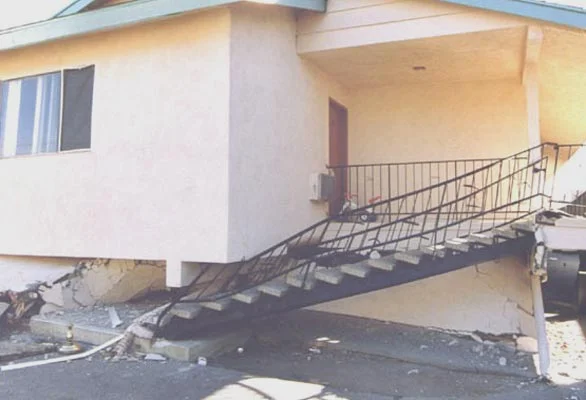Jason Lambert, NARI: Pay attention to building codes and best practices even if you’re not pulling a permit or having the project inspected. When it comes time to sell your house, you don’t want a home inspector to raise questions about your work that could derail your sale, or worse, require after-the-fact permits/demolition. It should go without saying that if you need a permit for the work, pull one, even if you’re doing the work yourself.
HDR Remodeling: Underestimating the time it takes to complete a project, which often results in headaches, rushed work that produces less than optimal outcomes, dealing with unforeseen issues, and costly last-minute appeals to a professional to make it right. When estimating a DIY project, get a time reference from an experienced professional and allow yourself twice the allotted time. For example, if it takes an expert two days to tile a kitchen backsplash, allocate four days to complete the project yourself; your stress level and your budget will feel the difference.
Jim Kabel, Next Stage Design: Avoid biting off more than you can chew. There’s a reason why maintenance experts like design/build firms, plumbers, HVAC specialists, and electricians are in such high demand — what they do requires an incredibly specialized skillset that likely taken years of education and training to attain. Attempting these as a homeowner (without the proper training) may seem like a way to save money in the short run, but in the big picture, it could cost you even more money and most importantly, your personal safety. If you have any doubts about whether you can handle something, it’s best to give your local home remodeling company or maintenance specialist a call.
Patch of Land: Understand the permits involved. Often local city ordinances require a building permit before work can be started. The best way to know whether you need a building permit is to contact your local building department to determine whether or not you need a permit. The process of obtaining a building permit can be annoying and expensive, but remember that building codes are enforced to safeguard life, health, and public welfare. Rehabbing with a building permit helps protect your investment, future families, and your community. Not to mention it’s the law!
Top Contractors: Hiring unlicensed contractors (friends) who can “save you a lot of money.” Hiring unlicensed contractors to save money, usually ends up costing the homeowners more overall. This commonly happens because the projects are either not fully completed, or homeowners are unhappy with the final results. Resulting in the homeowners having to hire a licensed contractor to come and fix or replace the work previously completed.
Palm Beach Premier Remodeling: Having the mindset of “anyone can do it” but there is a way a professional tradesman can do it so that it will last a lifetime. And at the end of the day, what makes a project complete is ALL in the details!
Renewal Construction: Where there is a bathroom there is water and if that water makes its way below tile flooring and showers, it can cause a lot of damage (and cost a lot of extra money)! Consider hiring a professional tile installer to be sure that the subsurface, tile, and grout are correctly installed in order to protect your bathroom from water damage down the road. If hiring a professional is out of the question, take the time to research subsurfaces and grout (we recommend epoxy-based grout for shower pans and silicone-based grout for the walls) to be sure that you are able to install a quality tile surface that will last.
LetsBuild: Going cheap on the materials. Trying to keep your budget under control during a DIY project is understandable. However, you don’t want to be stingy when it comes to the materials you are planning to use. Make sure that you prioritize quality otherwise you will end up paying twice as much for maintenance in the long run.
Drafting Cafe Architects: To avoid hefty change orders during construction, homeowners should select their finish materials before requesting bids from contractors. Cabinet, flooring, and tile costs can vary greatly and many architects don’t specify those materials in their drawings. If a contractor is left to make assumptions, they could underbid (or overbid) and make it hard for the homeowner to compare bids or prepare themselves financially.
Kevin Knobles, KMK Contracting: “Jack of all, master of none.” Very few homeowners have the necessary skills to handle all of the different components of a remodel correctly so that the finished product is one your family and friends will be jealous of. However, some homeowners have some very useful skills that can and should be put to work. Know your boundaries and stick to them and get the help of professionals where you lack the skills or experience. That way you can still be part of the project but not end up with something that you regret in the long run.
Leo Lantz, Leo Lantz Construction: The project’s timelines to complete is grossly underestimated. My Dad always said, “Son, you can’t beat a man at his trade.” Well, if you don’t do it all the time, you can’t be as fast as he is…
Novel Remodeling: Not measuring properly. Let’s assume you are replacing a few windows in your home. As a licensed general contractor, we measure the windows from opening to opening. Often times homeowners that are DIY and just want windows because they believe they can replace them themselves. Many times they measure incorrectly and then have huge delays when windows arrive and do not fit in the opening.
BuildingAdvisor.com: Poor space planning. This can be clashing doors, uneven floor transitions, or inadequate clearances in kitchens and baths. Take the time to plan your project with accurate scale drawings, models, or full-size mock-ups. Problems are easy to fix now, but nearly impossible after the fact.
Tim Anderson Architect: Remodeling becomes remuddling when the original character and integrity of a house are lost in the renovation process. This happens when changes are inappropriate for the period and style. Misguided improvements confuse and diminish character, as will additions that overwhelm the original scale and features of the house.
Pathway Design and Construction: Planning ahead and making sure all materials and products have been selected, purchased, and double-checked for size, style, or content before the project begins. Time, frustration, and waste are minimized when you can get all of your supplies in (and make sure they are correct) before you start. You may run the risk of not getting enough of a product and it no longer being available when you’re only halfway through and discover you’re short.
Blue Diamond Remodeling: Thinking how easy the project is due to seeing it on TV, they don’t show the difficulties on TV with the jobs, they show it to be smooth and easy. When homeowners have failed with the DYI project they end up calling professionals for help.

















